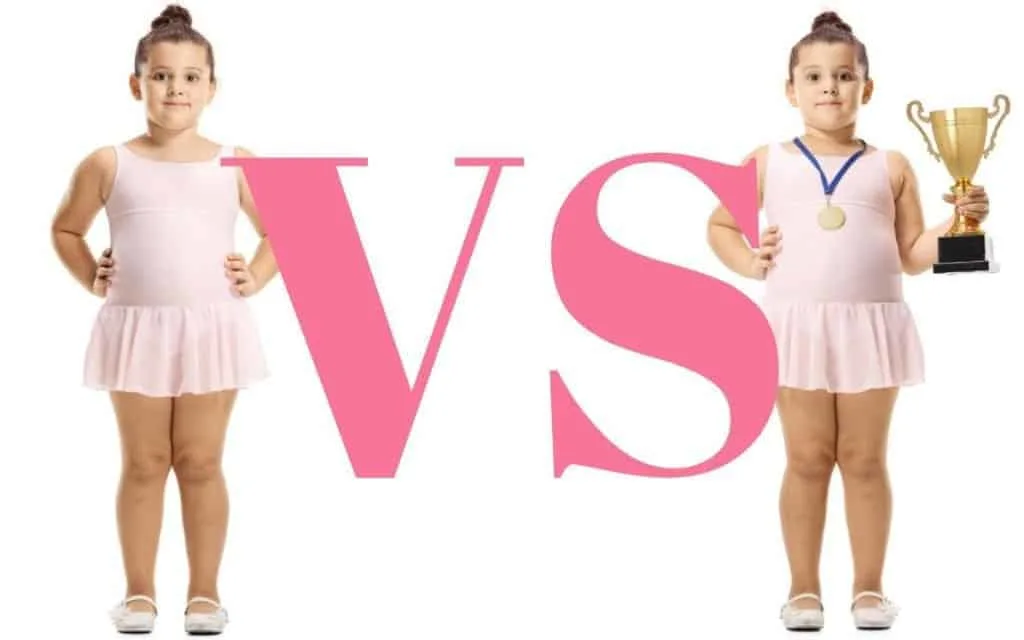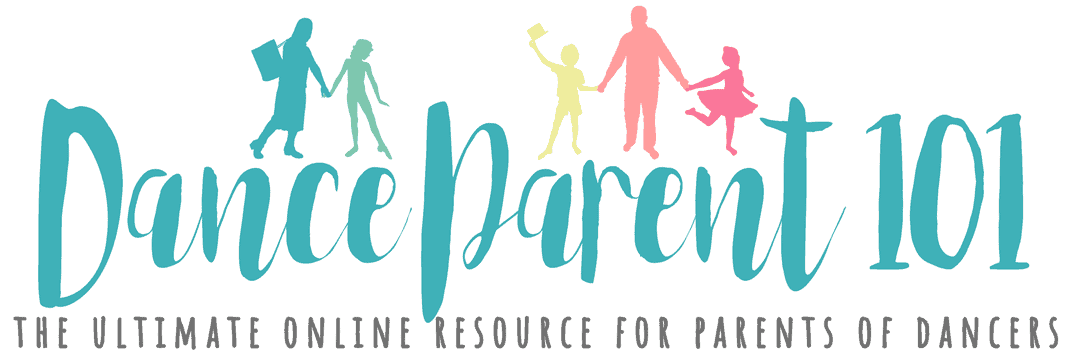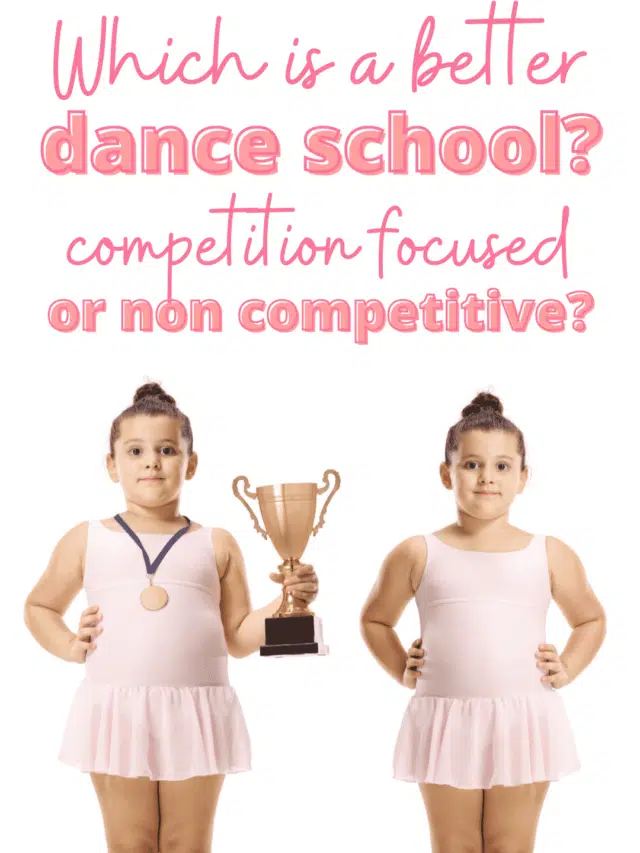
There are two local dance schools in my neighbourhood. I’ve been told one participates in a lot of dance competitions where as the other doesn’t and is more of a ballet focused school. So now I am wondering which is better for my kid?
A non-competitive dance or ballet studio will generally focus on developing technical excellence whereas a competition dance studio teaches technique but focuses on training dancers to entertain and perform.
A non-competitive or a competitive dance school is only better than the other, dependent on your child’s purpose for wanting to dance.
WHAT IS A NON COMPETITIVE DANCE SCHOOL?
A non competitive dance school is one where the focus is on preparing students for a career in dance, generally ballet, through examinations, or following a syllabus or method proven to develop flexible, strong and technically excellent dancers.
WHAT IS A COMPETITIVE DANCE SCHOOL?
A competitive dance school is one where the focus in on training students in a variety of dance disciplines, including acrobatics to develop dancers who are team players and enjoy performing for and entertaining an audience. Competitive dancers would more likely go onto dance in the commercial dance industry, or in musicals rather than in a ballet company.
CAVEAT: There are plenty of non-competitive dance schools where the focus is more on fun and fitness, or are multi-discipline schools teaching their students to be versatile dancers who prefer to work through a syllabus, method or exams. There are also competitive schools that focus on preparing students to become members of ballet companies. But for the purpose of this article and the question you wanted to be answered, we are focusing on schools that generally fit into the two definitions written in the two columns above.
Which Offers the Best Way to Learn Dance?
A Non Competitive or Competitive Dance School?
There is an argument within the dance world that a good foundation in ballet produces the best dancers. Many ballet teachers would agree therefore that students should be focused on developing their discipline and technique rather than their stage presence. On the other hand many competitive schools make their competition students sign contracts agreeing to attend a set amount of technique classes a week on top of their competition focused lessons. But in the end who will be the better dancer? The student spending ten hours a week developing their ballet technique or the student spending 1 hour each on ballet, contemporary, jazz, tap and Acro technique and the other five hours in rehearsals for competitions?
Whilst completing my Bachelor of Education Degree I was taught that a child will only truly learn what they are interested and motivated to learn. Therefore a dancer who thrives on the routine, discipline and repetitiveness of Ballet Practice will always be better than a student struggling to keep up with the variety of dance styles they need to master to dance competitively. And Vice Versa a student bored to death in Ballet class will be the weaker dancer if compared to a student who loves the challenge of learning a variety of dance disciplines.
Another argument is that competitive dance is just all about the money with more and more competition events and schools opening each year to profit from the competitive dance industry. Because of this it can be shallow as most of the time dancers are mainly dancing to prove to others they are better than them rather than dancing just for the joy of dancing – which is what makes dance an artform rather than a sport. But with the increase in popularity of entering competitions and competitive schools these opinions seem to be from a minority.
Which is cheaper?
A Non Competitive or Competitive Dance School?
It can be dependent on how many dance styles and competitions routines your child is in, but on the whole competitive dance is more expensive – which is why it is lucrative and popular for dance teachers and event organisers to promote entering competitions to you.
Many non competitive dance schools work students towards passing examinations or in developing creativity which can be cheaper on the purse strings. A competitive school teaches students a diverse range of dance styles, working towards performing in full costume at dance competitions in various locations around the country which can be heavy on the wallet.
Parents on either side of this debate would give good arguments to claim that the path they and their child have decided to take has put alot of strain on their finances. Here is a quick run down and comparison of what you might have to pay for at either school.
| NON COMPETITIVE | COMPETITIVE | |
| Lessons | Less classes to begin with 1-2 a week, but if working towards a career in ballet this should go up to around 20 hours or more per week around the age of 16. | One lesson per dance style your child is learning. At age 16 your child will probably be doing similar hours to that of a non-competitive dancer. |
| Costumes | Around 2-4 per year for recitals. Some schools perform informal recitals or open classes instead which only require students to wear their class attire. | At a minimum one for each dance discipline they are learning for recital performances and then you can often add on more for competition troupes, duos, trios and solos. |
| Entry Fees | One to Two sets of entry fees for examinations each year. | Entry fees for each item they perform at a competition. Then you multiply this by how many different competitons they will be doing over the year. |
| Intensives and Camps | Available and recommended to do if serious about a career in ballet. | Available to do. |
| Dance Wear | Studio uniform. Ballet leotard, stockings and ballet shoes. Skirts and shoes for character dance. Practice Tutus. Pointe shoes for girls from the age of 12 and up which need to be replaced frequently. | Studio or competition uniform. Some dance schools have different class attire for their ballet lessons compared to their jazz or contemporary lessons so this needs to be considered. Shoes for the different dance styles example ballet and tap shoes. |
| Miscellaneous | Hair accessories and make up for recitals. | Hair accessories and make up for recitals. Costs for travel to and from competitions which are generally not local. If your child gets into Nationals there might be flights and hotel expenses to consider. |
Which do I have to put more time into as the parent?
A Non Competitive or Competitive Dance School?
Simply put a non competitive school will take up less of your time and effort as a dance parent. You will always have to drop and pick up your child from lessons at either type of school, talk with their teacher, attend recitals, open classes and other similar events. Your time will be taken up more often at a competitive school as you spend weekends away at dance competitions, as you organise costumes and fittings, stay on top of your child’s dance schedule and attend more rehearsals. And as competitive schools offer a team environment, they often extend this to the parents of students with parent committees, meetings and social events. Some families thrive in this type of environment and make many wonderful friends and memories where as others find it stressful, taking up too much of their free time.
Which Offers the Best Career Path?
A Non Competitive or Competitive Dance School?
Whether a child competes in dance competitions or not, does not determine whether they will be able to break into the professional world of dance and sustain a career. What it will determine is what type of career they will end up. Training to become a teacher wont let you become a Brain Surgeon- but if you are a Brain Surgeon you could easily transfer your skills to teaching. Training as a competitive dancer will unlikely lead you on a path to becoming a prima ballerina, where as the non competitive ballet dancer who focused on their technique and strength with a little work and determination could work in many other dance industries in the future.
But seriously which one is better?
Honestly it all depends on what you want to commit to, what you can afford, what you want your child to get our of their dance experience and what your family and your kid enjoy doing.
If you are still stuck on which to choose – head on over to our in depth article on How to Choose the Best Dance School which will help you further decide which type of school is best for you!
We’d Love to Hear From You!
As always we have disabled comments on our articles but hope you will tell us if what you love about your competitive or non-competitive school through commenting on the post relating to this article on our facebook or Instagram pages.
Further Reading
You might also be interested in reading more about competitions and we have a huge selection of articles which you can find here:

